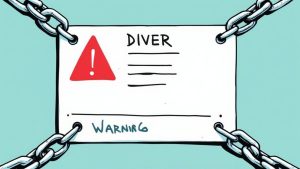Your driving record is one of those things you probably don’t think about until you have to. But this document, officially known as a Motor Vehicle Record (MVR), is more than just a list of old traffic tickets. In fact, it’s a complete history of you as a driver. It also has a surprisingly big impact on your insurance rates and even job opportunities.
Knowing how to check your own record is a skill every driver should have. Ultimately, it’s about taking control and making sure your driving history is accurate.
Why Your Driving Record Matters
Think of your MVR as your driving resume. It’s the first thing insurance companies and many employers look at to see how responsible you are behind the wheel. Therefore, a clean record can open doors to lower costs and better jobs. A history of violations can, unfortunately, do the exact opposite.
The Direct Link to Your Insurance Premiums
There’s a reason your insurance agent asks about your driving history. In short, it’s one of the single biggest factors they use to calculate your premium. To an insurer, a record full of tickets or collisions signals high risk. As a result, high risk almost always means a higher bill.
On the flip side, a clean record proves you’re a safe, low-risk driver. Consequently, you can qualify for the best rates and big discounts. Keeping an eye on your record helps you spot any errors and avoid surprises when it’s time to renew your policy. This is a key step in learning how to lower insurance premiums. For more information on safe driving practices, the National Highway Traffic Safety Administration (NHTSA) provides extensive resources.
A Major Hurdle for Job Seekers
For a growing number of jobs, a clean driving record isn’t just a “nice-to-have”—it’s a requirement. This is a given for any role that involves getting behind the wheel of a company car. However, its reach extends further than you might think.
Here are just a few fields where your MVR will likely be checked:
- Transportation and logistics (like trucking or delivery driving)
- Sales positions that require you to travel to clients
- Any delivery service (from packages to food)
- Healthcare roles involving patient transport
Potential employers check your MVR to see if you’re dependable and safety-conscious. A few serious violations could easily knock you out of the running for a job. This can happen even if you’re the most qualified person on paper. For federal guidance on transportation safety, visit the U.S. Department of Transportation (USDOT).
How to Get a Copy of Your Driving Record
When you need to see what’s on your driving record, the smartest move is to go straight to the source: your state’s Department of Motor Vehicles (DMV) or equivalent agency. This is the only way to get a certified, official copy. It also helps you avoid extra fees from third-party sites.
Thankfully, most states make it simple to get your record. You can often handle things online, by mail, or in person.
 The Quickest Way: Requesting Your Record Online
The Quickest Way: Requesting Your Record Online
For most people, grabbing your record online is the fastest option. You will just need a few pieces of personal information to verify your identity.
Before you start, make sure you’re on the official state website. A good rule of thumb is to look for a URL ending in .gov. That’s how you know it’s a legitimate government site.
To complete the online request, you’ll typically need:
- Your full name (as it appears on your license)
- Your date of birth
- Your driver’s license number
- The last four digits of your Social Security number
This process is designed to be secure and straightforward, giving you direct access to your MVR.
As you can see, sticking with the official .gov site is your best bet for a secure, direct path to your driving history.
The Traditional Route: Using Mail or In-Person Options
If you prefer a paper trail, requesting your record by mail is a solid alternative. Your first step is to visit your state’s official DMV website and download the correct request form. Be sure to only download forms from the official site to avoid rejections.
Fill out the form with care, making sure every detail is accurate. You’ll need to include a check or money order for the fee. Double-check the exact amount on the form, as fees can change. Then, mail the completed form and your payment to the address listed. Just be prepared to wait a bit longer for it to arrive. You can also visit a local DMV office in person.
Decoding Your Driving Record
So you’ve got your driving record in hand. At first glance, it can look like a jumble of official codes, dates, and jargon. Don’t worry, it’s not as complicated as it seems once you know what you’re looking for. Let’s walk through how to make sense of your official driving history.
This document, the MVR, is the state’s official report card on you as a driver. It contains everything your state’s DMV has on file, from your license status to any incidents. It’s the same kind of report that insurance companies and some employers check.
What Am I Actually Looking At?
Your MVR is broken down into specific sections that paint a full picture of your history behind the wheel. When you first open it, the most important thing is to verify that all your personal details are accurate.
From there, you’ll want to review your license information. This part confirms whether your license is currently valid, suspended, or revoked. It also lists any special endorsements or restrictions, such as a requirement for corrective lenses.
The section that usually gets the most attention is the one detailing traffic violations and convictions. This is where you’ll find a history of any tickets you’ve received. Each entry should include the violation date, a description of the offense, and the number of points added to your record. If you are unsure what counts, our guide on what is a moving violation can help.
Pro Tip: Keep a sharp eye on the dates and violation codes. It’s not unheard of for a clerical error to pop up. Catching these mistakes is one of the biggest reasons to check your record regularly.
Common Elements on a Driving Record
To help you get comfortable with the layout, your MVR generally contains a few standard pieces of information. This table breaks down what you’ll typically find and why it matters.
| Record Element | What It Means | Why It’s Important |
|---|---|---|
| Personal Information | Your full name, date of birth, and current address on file. | This confirms the record is yours. Any inaccuracies here should be corrected immediately. |
| Driver’s License Status | Shows if your license is active, expired, suspended, or revoked. | This is the most critical piece of information. Driving on a suspended license has severe consequences. |
| License Class & Endorsements | Details the type of vehicle you are permitted to operate. | Ensures you are legally cleared to drive specific vehicles and helps prevent fines. |
| Violations & Convictions | A chronological list of traffic tickets, including dates and points assigned. | This is what insurance companies focus on. Too many points can lead to license suspension. |
| Collision Reports | A summary of any reported collisions you were involved in. | A history of at-fault collisions can dramatically increase your insurance premiums. |
| Course Completions | A record of any state-approved driver improvement courses you have taken. | This shows you’ve taken steps to mitigate points or satisfy a court order. |
Understanding these components gives you the power to manage your driving history proactively. After you know what’s on your record, you can take the right steps to address any issues.
Understanding Violations and Points Systems
When you check your driving record, the section listing violations is probably where your eyes will go first. This is where your state’s DMV keeps a running tally of any traffic tickets. It’s all based on a points system.
Think of it this way: every time you’re convicted of a moving violation, points get added to your license. A minor speeding ticket might add a few points. However, a more serious offense like reckless driving can add points much faster. If you get too many points in a set period, the state may suspend your license.
State Spotlight: California’s “Move Over” Law
Each state has unique traffic laws. For example, California has a strict “Move Over” law to protect emergency responders and roadside workers. According to the California Department of Motor Vehicles, drivers must move over to an adjacent lane if it is safe to do so when approaching a stationary emergency vehicle or tow truck displaying flashing amber warning lights.
If you cannot move over, you must slow to a reasonable and prudent speed. This law, California Vehicle Code § 21809, is critical for roadway safety. The Governors Highway Safety Association (GHSA) tracks such laws nationwide.
The Long-Term Consequences
The good news? Points don’t stay on your license forever. The bad news? They stick around for a while. In general, the impact of a single violation can linger for 3 to 5 years. This often results in higher insurance costs.
Knowing how this system works is the first step to taking control. If you’re curious about specifics, you can learn more about how long points stay on your license in our detailed guide.
What to Do If You Find an Error on Your Driving Record
It’s a frustrating feeling: you check your driving record and spot a mistake. Maybe it’s a ticket that was dismissed but is still showing up. Don’t panic. You have every right to get it fixed.
The trick is to be methodical and act fast. First, pull together every piece of documentation you have related to the error. This is the most important part of the process.
- Dismissed Ticket? You’ll need the official court document that proves it.
- Completed a Course? Find that certificate of completion.
Solid proof is your best friend when dealing with government agencies. You can’t just say it’s wrong; you have to show them it’s wrong.
Reaching Out to Your State’s DMV
Once you have your evidence organized, it’s time to formally contact your state’s DMV. Each state has its own specific procedures for disputing information on a driving record. You can typically find the right forms and contact details on their official website.
When you make your case, be direct and clear. Point out the exact error and attach copies (never originals!) of your proof.
Here’s a pro tip: Keep a detailed log of every single interaction. Write down the date you sent your request and the name of anyone you spoke with. This paper trail is very helpful if the process takes a while.
Taking these steps is the only way to ensure your driving history is accurate. And if you are just starting this journey after getting a citation, our guide on how to contest a traffic ticket can give you a head start.
 Frequently Asked Questions About Driving Records
Frequently Asked Questions About Driving Records
It’s natural for a few questions to come up when you check your driving record. Let’s tackle some of the most common ones.
How long do points stay on your driving record?
This really depends on your state. For a minor violation, points may stay on your record for about two to three years. However, for more serious violations, they could remain for five, ten, or even more years. Always check the official DMV website for your specific state’s rules.
Can an employer check my driving record without permission?
No. Thanks to a federal law called the Fair Credit Reporting Act (FCRA), an employer needs your explicit written permission first. You will almost always see this consent form as part of the job application process for any role that involves driving. The Federal Highway Administration (FHWA) views this as a critical protection for employees.
What is the difference between an official and unofficial driving record?
An official record comes directly from your state’s DMV. It usually has an official seal and is the only kind accepted for legal or employment purposes. An unofficial copy has the same information but lacks certification, so it is only for your personal review.
Will a ticket from another state show up on my record?
Most likely, yes. The vast majority of states are part of an interstate agreement called the Driver License Compact (DLC). This compact ensures that if you get a ticket in one member state, the violation gets reported back to your home state’s DMV. Your state will then add the offense and points to your record. You can find more information about traffic safety at NHTSA.gov.
What does the “Move Over” law require?
The “Move Over” law requires drivers to move over a lane or slow down when approaching stopped emergency or service vehicles with flashing lights. Specifics vary by state, so it is important to check local driving regulations.
Ready to improve your driving skills and maintain a clean record? Taking a state-approved driver improvement course can help you handle points from a recent ticket and become a safer driver.





